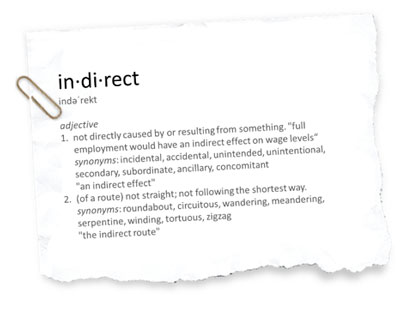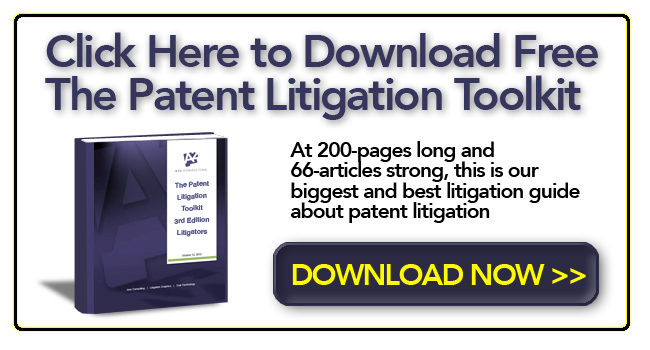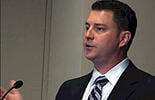
by Ryan H. Flax, Esq.
(Former) Managing Director, Litigation Consulting
A2L Consulting
On May 26, 2015, the U.S. Supreme Court released its opinion in Commil USA, LLC v. Cisco Systems, Inc. (575 U.S. ____ (2015)) and it will significantly change patent litigation in the U.S.1
In Commil USA, the Court clarified when indirect patent infringement known as “inducement” occurs and how [not] to escape liability. As a bit of background, a patent can be infringed directly and indirectly. The Patent Act, at 35 U.S.C. § 271, makes it unlawful to make, use, sell, or offer to sell (in the U.S.) a patented thing or process without the patent holder’s permission. Part (a) of this section provides liability for direct infringement, that is, outright doing the thing that infringes a patent. Part (b) governs the first of two indirect infringements, induced infringement, and states “whoever actively induces infringement of a patent shall be liable as an infringer.” This is the focus of the Commil USA case. Part (c) of section 271 deals with the second of the indirect infringements (and interestingly, the one that was first statutorily identified), which is contributory infringement, which makes it an infringement to supply a non-staple, component for use in a patented thing or process.
Both types of indirect infringement require that some direct infringement occur and that the accused infringer actually know that its actions will constitute infringement of the patent at issue. The question before the Court was whether it was a proper defense to induced infringement that the accused infringer had a reasonable belief that the asserted patent was invalid. There is no question that there can be no infringement liability of an invalid patent claim, but does that matter when an accused infringer knows that its actions would otherwise infringe?
The Supreme Court held that, no, it does not matter. It’s no excuse and does not absolve liability for induced infringement that the accused infringer had a reasonable belief that the infringed patent was invalid. This is contrary to (and overrules) several years of precedent from the U.S. Court of Appeals for the Federal Circuit, which has held repeatedly that you cannot infringe an invalid patent and so reasonable arguments that a patent was invalid prevent induced infringement liability.2
 The law of the land on induced infringement is that if there is (1) a direct infringement of a patent and (2) you knew of the asserted patent and (3) you knew that the acts you actively encouraged would infringe that patent, you’re liable for infringement whether or not you thought that patent was valid or invalid. Validity is presumed, so as an accused infringer you can’t assume otherwise.
The law of the land on induced infringement is that if there is (1) a direct infringement of a patent and (2) you knew of the asserted patent and (3) you knew that the acts you actively encouraged would infringe that patent, you’re liable for infringement whether or not you thought that patent was valid or invalid. Validity is presumed, so as an accused infringer you can’t assume otherwise.
How will this affect patent litigation and patent counseling going forward?
If clients are potential indirect patent infringers, meaning they don’t actually directly infringe, but they either contribute to infringement (e.g., they supply the key component making infringement possible in an otherwise not-infringing product) or their actions would arguably encourage the direct infringement of others (e.g., a patent claims playing a video game and the client developed the software and sold the game hoping hundreds of thousands of gamers would play it), how can we help insulate them from liability?
Opinions of counsel are key and they must address non-infringement. The point of the legal opinion is to instill a reasonable belief in your client that they do not infringe.
As soon as your client learns of a patent and potential infringement, a well-reasoned (I’d suggest formal) opinion should be developed and it should focus first on a reasonable claim construction that takes the behavior at issue out of the scope of infringement. I do not advocate ignoring validity issues in these opinions, but no matter how well reasoned they are they will not mitigate against indirect infringement unless you actually succeed on the invalidity arguments at trial.
 Pre-trial opinions should set out solid reasons why there is no direct infringement. The claim construction is the first step. A reasonable claim construction that pushes the claimed invention away from the client’s behavior or product is the goal. The second step is identifying why the potential infringer’s (this is some third party because the client will be an accused inducer) actions fall outside the patent’s claim scope when properly construed. An alternative, more conservative argument on claim construction and non-infringement may also be warranted, using a claim construction more likely to be adopted by the patent holder. If a direct infringer’s actions reasonably do not infringe the more conservatively construed claims then you likely have a good argument against inducement.
Pre-trial opinions should set out solid reasons why there is no direct infringement. The claim construction is the first step. A reasonable claim construction that pushes the claimed invention away from the client’s behavior or product is the goal. The second step is identifying why the potential infringer’s (this is some third party because the client will be an accused inducer) actions fall outside the patent’s claim scope when properly construed. An alternative, more conservative argument on claim construction and non-infringement may also be warranted, using a claim construction more likely to be adopted by the patent holder. If a direct infringer’s actions reasonably do not infringe the more conservatively construed claims then you likely have a good argument against inducement.
The reasonable claim construction(s) developed at the pre-litigation counseling stage should be carried through to any litigation that ultimately develops so that the pre-litigation reasonable belief in non-infringement is reinforced. District courts get some deference in their claim construction holdings – that is, factual conclusions underpinning a claim interpretation under the law are reviewed for clear error, not de novo, thanks to Teva Pharma. USA, Inc., et al. v. Sandoz, Inc., et al., 135 S.Ct 831, 574 U.S. ___ (2015). This should be taken into consideration when developing non-infringement arguments and the facts upon which your claim construction is based should be carefully planned and soundly supported. Winning at the district court is important for this reason and, so, winning (or at least doing a reasonable job) the Markman is essential. If you had a pretty good, but still losing claim construction argument at the district court, you have an argument to the Federal Circuit that you had a reasonable believe you didn’t infringe the patent because of it.
Above all else, you must plan early to be the most reasonable man in the room when it comes to arguing non-infringement, whether your reasoning is based on claim construction or the facts.
Other articles on A2L Consulting's site related to patent litigation and the use of visuals in patent trials, in the ITC and in IPRs:
- 5 Tips For Inter Partes Review Hearing Presentations at the PTO
- Free Download: The Patent Litigation Toolkit (3rd Edition)
- Free Watch: Patent Litigation Graphics Secrets
- 11 Tips for Winning at Your Markman Hearings
- ITC Hearings: An Overview from Section 337 Practitioners
- 11 Tips for Preparing to Argue at the Federal Circuit
- Litigation Graphics and Demonstrative Evidence at the USPTO
- Trademark Litigation Graphics: Making Your Best Visual Case
- Other A2L articles discussing intellectual property litigation

[1] The Court’s opinion was written by Justice Kennedy, the same judge who wrote the opinion in KSR Int'l Co. v. Teleflex, Inc., 550 U.S. 398 (2007).
[2] It should also be noted that the Federal Circuit has ruled similarly on the issue of enhanced damages for willful infringement – that a reasonable belief that a patent is invalid prevents the satisfaction of the first, objective recklessness prong under Seagate(497 F.3d 1360 (Fed. Cir. 2007)). It will be interesting to see if the Supreme Court has anything to say in the future on this issue. The Seagate rule does add that the risk of infringement must be of a “valid patent,” but this is a court-made rule and not statutory.
The materials on this website are provided for informational purposes only and do not constitute legal advice.




Leave a Comment